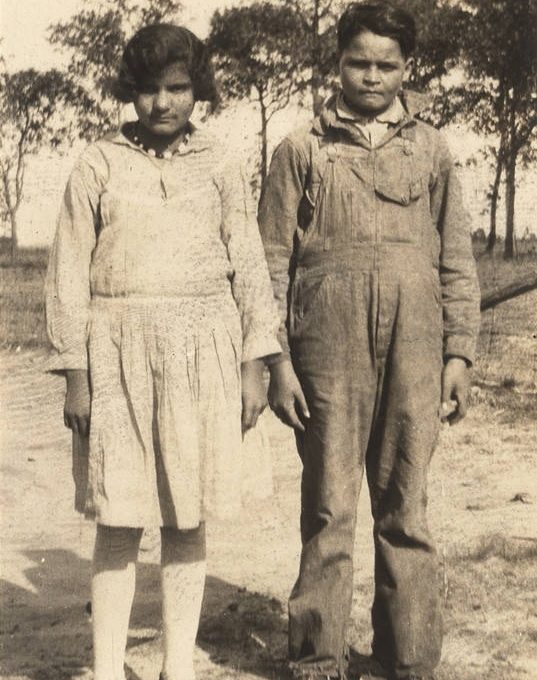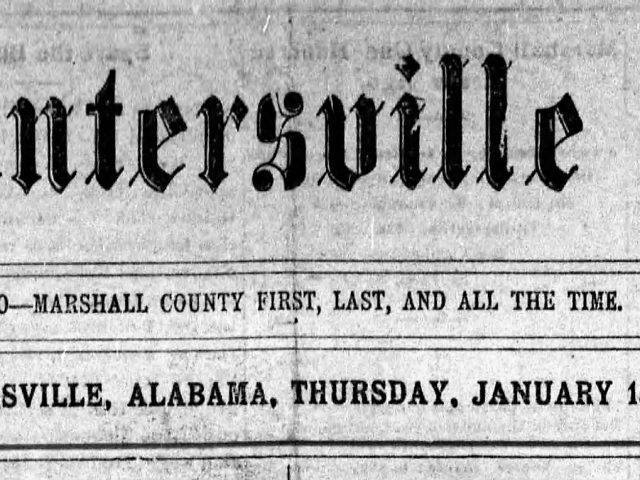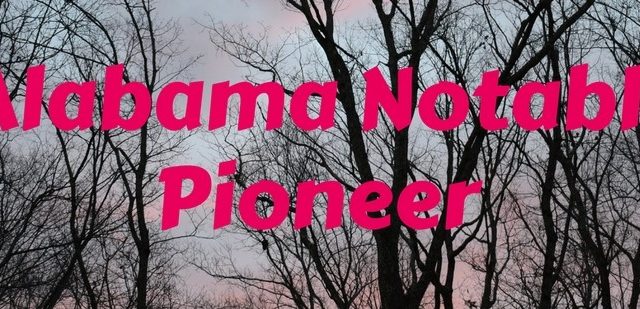Photograph of Cajun girl and boy in Mobile County, Alabama (Alabama Department of Archives and History)
(Continued – from Alabama Folklore Part III)
Unemployed authors were employed through the Works Project Administration WPA to record the life and culture of Americans during the Great Depression era. Many were employed in Alabama. In 1937, this excerpt was part of an essay written about Alabama Folklore. The author stated this purpose in writing the essay at the end. The essay is long so it has been divided into several parts. Since it was written in the 1930s, it captures some of the language of the times so be forewarned that it might offend some readers.
The simple tales that have colored existence for the generations also become fewer, unless captured and put on the printed page. The line of story tellers grows thin. Widespread education, new modes of thought and life are responsible for the passing.
To preserve these legends that are so essential a part of the history of the people, the chronicler must prepare his records with haste before the sources have dried.
Alabama Folklore Part IV
(The excerpts below have been transcribed from an Essay titled Alabama Folklore March 26, 1937, by J. Edward Rice, Pettersen Marzoni and rewritten by David Holt, Editorial Department, Federal Writers Project Dist. 2, WPA Project 3014, Identification No. 0149-17374)
Creole Lore
The following Creole Chanson d’amour was popular from early French days in Colonial Mobile, until the close of the Spanish Regime. The accompanying free translation into English is by Francois Ludgers Diard: Creole:
AH, CHER BIJOU D’ACAJOU
Si to te ‘tit zozo
Et moi-mome mo te fusil
Mo are tohoue toi- boum!
—–
Ah, cher bijou
D’acajou
Mo l’aimin vous
Comme cochon aimin la boue!2
Free Translation into English:
If thou wert a little bird,
And I were a little gun,
I would shoot thee – bang!
Ah, deer little
Mahogany jewel.
I love thee as a little pig loved the mud!
Descendants of Arcadians who drifted to the Gulf Coast following their expulsion by the British from their Canadian home, found in the Creoles of Mon Louis Island, Dauphin Island and several other Mobile county communities congenial friends and neighbors. Having the same religious training and belief, the same basic language and finding themselves misunderstood by their English-speaking neighbors, with whom they had little disposition to associate, their families inter-married and intermingled, not only with the French and Spanish families about Mobile but also with those of the Pascagoula, Back Bay of Biloxi and Wolf River settlements in Mississippi. Those among them who made their home on or near the bay or sound became expert sailors of small craft, which furnished means of communication between their scattered families, who were visited periodically by Catholic Missionaries.
Using the Same Means of Travel
Church records of marriages, baptism and burials are practically the only written records of these people that remain, nor did they preserve much of their history in surviving song, story or tradition. Broadening use among the present and immediately proceeding generations of the phonograph, then the radio the movies and the schools have taught the use of the common language of the region, so that only a trace of the Cajan-Creole dialect remains among the older people and even they appear more anxious to lose this lingual means of identification than to perpetuate it.
“Ef you see my cow ‘cross de bayou, push heem home”,
This typical sentence will convey some idea of their old form of speech. The old-timers never seemed able to get their personal pronouns straight. They habitually mixed “Him” and “Her”, sometimes with amusing results.
A folk song which was still sung by coast shrimpers of the old coast families twenty years ago and may still be recalled by the older members tells of the adventures of one Jean Grabeau and his tragic end.
One of its numerous verses:
Jean Grabeau, poor Grabeau he steal my boat and away he go.
The rain he fall an’ de win’ she blow,
An’ dat was de en’ of Jean Grabeau
—-
Florian Seale used to recite the narrative recounting the death from yellow fever of his little friend Babette, as told by the child’s grief stricken papa:
Wat for Le Bon Dieu tak my chile
An mak she’s mother almos’ wile
Wid loss of one lik dat so sweet
Wat for He go and tak Babette?
Dis worl is beeg an verry wide.
Ole age should always have a guide.
Now wat I do? My tremblin feet
Mak me fall down witout Babette.
I miss her when I go to bed-
No more can pat dat curly head-
When mornin come no one to greet
Papa-none like dat chile Babette.
“God’s will be done”, de good pries’ say
An tell me on my knee for pray
But prayer lak dat I can’t repeat-
I mees to much Dat chile Babette.
Ah me! Soon. Soon I go for slep
An leave no one behin’ for wep
But then – I walk de golden street,
Wid happy, smiling, pure Babette.
Some Descendants of BENJAMIN TROTT (1774- 1835)
Descendant surnames include: ALLEN, ARNETT, ARNOLD, BURNS, COCHRAN, COOK, COTTINGHAM, DAILEY, DANIELL, DAVENPORT, DEASON, EADY, ELLIS, FANCHER, FRYE, GARTHMAN, GEORGE, GIBBONS, GOURNEY, HENDERSON, JENKINS, JETTON, JOHNSON, JONES, LANGSTON, LAWRENCE, LOWERY, MCINTOSH, MCKINNEY, MOORE, MORTON, NEELY, PARKER, PIERSON, REYNOLDS, ROBERSON, ROBERT, RUSSEL, SCOTT, SHAW, SHIELDS, SHOEMAKER, SMITH, SULLIVAN, TIDWELL, TRUCKS, WATS, WEBB






Dollar to a doughnut, the dress was made out of a flour sack. My Mother made me a shirt out of a sack that looks like that design.
That’s what a lot of my clothes were made of and I was prod of what my mother made for me
The flower sacks came with designs just where the customers had the option of using the material. Right?
Yup. I have been looking for some flour sacks just to have.
Joey West yes
That’s right back then there are a lot of pretty flower bags
The Choctaw Nation of Indians also referred to as the Cajun Indians of Southwest Alabama.
The Missionaries continues their work as the American Board of Foreign Missionaries in the 19th century.
The various denominations of religions began more Indian Missions in the Community from about 1910-1950’s.
The last Native American Indian mission was provided by the Quakers on the border of Mobile and Washington County Alabama at the Sanktown Community in February of 2018.
Chief Darby Weaver
The Tribal Leader
The school was the Weaver School – It was actually a “weaving and spinning school” originally.
The Choctaw and Chickasaw Indians (the names were interchangeable and did change from time to time depending on who was writing) were always home to Mobile and North Mobile County and have always been documented in the Weaver, Byrd, Orso (Juzan/Hollinger), Calvert (Colbert) Community or smaller communities.
The facts are often obscured by historians for various possible reasons.
The families and their communities are among the most well documented in American History even when deliberately obscured by others who have purported to be historians.
Chief Darby Weaver
The Tribal Leader
Darby Weaver i was told that my great great grandfather would send family to woods whenever census folks came to hide the “Indian” members so my history is missing pieces
Darby Weaver I have ancestors from this area that moved back and forth between Washington and Clarke County and Mississippi throughout the 19th century. I haven’t been able to find records for the Gibbs family members prior to 1840 and have been told they were Choctaw. What are my research options outside of the standard paths?
Start with Vital Records. When one is working with a single family it is relatively cheap by comparison of taking on the entire community’s records.
If you want to know who you are start with your immediate family.
If you already know where your people are then you are 90% there.
Some don’t know this much.
I have not yet ran into the Gibbs surname yet.
Most of our people intermarried repeatedly with other further extended family members.
There are exceptions but this is more 10% per generation maximum.
Then the next generation just married back in again.
To the effect that some surnames joined the community successively.
Chief Darby Weaver
The Tribal Leader
I guess the easiest question is to ask who are your grandparents and great grandparents.
page not found